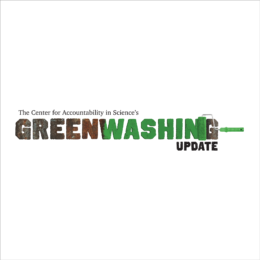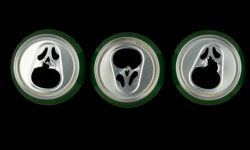Greenwashing: Straw Replacements

A video of a turtle and a third grader’s (questionable) calculation created the perfect storm to launch plastic straws into the position of public enemy number one in the eyes of many environmentalists.
While straws may seem harmless, there are millions used every day in sodas and coffee cups throughout the country, leaving many to fret about the accumulation of plastic waste in landfills and oceans.
Milo Cress, the 9-year-old who sparked fears about straw-mageddon by estimating that 500 million straws used per day, did not have the exact math correct; he overestimated by roughly 330 million straws per day. He did, however, strike a nerve with many environmentalists looking for ways to reduce plastic waste and inspired environmental groups to start campaigns to nix the use of plastic straws.
Many companies and municipal governments were thrilled to fall in line and work with environmentalists on the issue, but some of the straw alternatives that came forward are even worse for the environment than the traditional plastic straw.
Paper Straws
Paper alternatives are often thought to be more environmentally friendly than plastic products, but that isn’t always the case. Paper products require an immense amount of energy to create. For comparison, the production of a paper bag requires four times as much energy as it does to produce a plastic bag.
Trees must be cut down, transported, and ground into a pulp to make paper — each step requiring carbon-based energy. And while trees are considered a renewable resource, it can take decades for a tree to grow to full size.
After a paper straw is used, it must be placed in the landfill. While paper straws are considered biodegradable, they often take much longer to fully decompose. That’s because a product can be considered “biodegradable” if it decomposes up to 60% within 180 days. The remaining 40% of the product could take significantly longer to decompose.
Unlike most paper products, paper straws cannot be recycled after they have been used and contaminated by a drink.
Metal Straws
As plastic straws have been phased out, reusable straws have gained popularity. These straws are often made of stainless steel.
Metal straws can be reused many times before they need to be replaced, but they often require more waste than a standard plastic straw. The additional waste stems from production and packaging.
A stainless steel straw not only requires the mineral components mined from the earth to create the metal, but it often requires the additional production of a cleaning brush that is used to wash out the straw after it has been used.
After the stainless steel brush is produced, it must be shipped to the consumer. Not only does the shipment require fuel for transportation, but the metal straws often come shipped in plastic packaging. While some plastic packaging can be recycled, products like plastic bubble wrap cannot be recycled.
In addition to waste, stainless steel straws consume much more energy to produce. A single stainless steel straw requires the same amount of energy as 90 plastic straws. When only considering carbon emissions, a single metal straw must be used 150 times to break even with a plastic straw.
Starbucks Lid
There are 400 million cups of coffee consumed in the United States each day, so it is no surprise that coffee shops have caught the ire of environmentalists. Many major coffee chains have taken steps to reduce the amount of waste that each cup of coffee produces. While some of these companies have found successful ways to reduce their waste, many of these packaging changes are not as green as they appear to be.
The most notable example of coffee shop greenwashing was committed by the coffee giant Starbucks. In 2019, Starbucks announced that it would no longer automatically hand out straws with its drinks. Instead, it would be changing the lids for these beverages.
The company opted for a thicker plastic lid with a small opening rather than a thin lid with a straw. Critics bashed the company for addressing the problem of plastic pollution by adding a thicker plastic lid, but officials from Starbucks argued that the thicker lid is recyclable.
The lid is made from polypropylene, the plastic resin identified by a number five in most triangle recycling logos. While polypropylene can be recycled in most curbside programs, consumers must know that the product can be recycled and then choose to place it in the recycling bin.
The current recycling rate of polypropylene in the United States is just 3 percent while the recycling rate for other plastics, such as PET — the plastic identified by a number one — is 29 percent. For the switch to pay off, Starbucks needs to ensure that as many cups are recycled as possible — a feat the entire United States must work to improve upon.
Just one percent of the mismanaged plastic in the ocean can be traced to the United States and the Great Pacific Garbage Patch consists mostly of abandoned fishing nets, not plastic straws. Straws used in the United States should not be the top focus of environmentalists who want to protect the planet, but working to reduce non-essential waste is not a bad thing.
Plastic straws are not essential products, but neither are straws made from any other material. The best option may be to skip the straw altogether.
This is the fifth report in a series about companies “greenwashing” products to make them appear to be better for the environment than they actually are. You can read our other greenwashing reports here. Keep an eye on the Periodic Fabels blog for future updates to the series.



